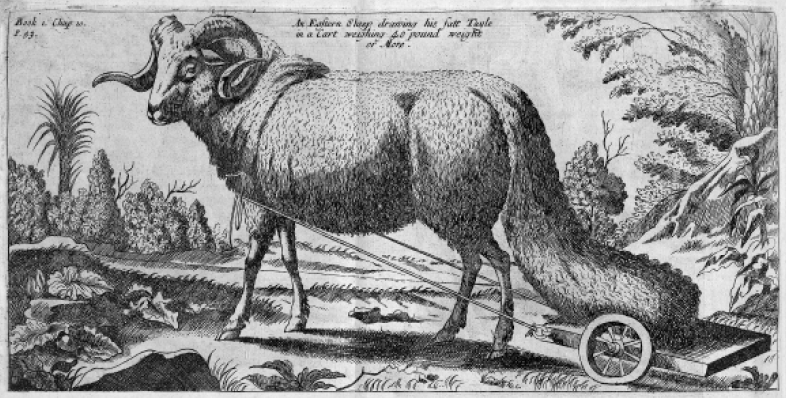A post on X set the social platform ablaze recently as user @Kairo_Anatomika shared some fascinating insights into fat distribution among animals in desert environments. Beginning with the camel whose fat humps are famous, the second post in the thread delivered a sucker punch in the form of the round rear-ends of fat-tailed sheep.
This domestic breed is characterized by large fatty tails that, if left unchecked, get so long they drag along the ground. According to Atlas Obscura, in the time of fifth-century “father of history” Herodotus, shepherds even provided their sheep with wheeled carts to keep their droopy fat slabs off the ground.
While X was stunned to the tune of over 47,000 likes (at time of writing), fat-tailed sheep won’t come as a surprise to those familiar with livestock. After all, fat-tailed sheep really do make the rocking world go round, accounting for roughly a quarter of the planet’s sheep.
The trait first emerged as an energy store to keep these animals going in the harsh climates they’re native to, which include desert-like areas in the Middle East, Northern Africa, Northern India, and Central Asia. It was then selected for by humans because of the unique texture they bring to cooking, with tail fat having become an essential part of many cuisines.

The fat-tailed sheep has so much junk in the trunk that historically people have made carts to help them get around.
However familiar you may be with fat-tailed sheep, there’s no getting away from the fact that their plump posteriors are quite a sight. From fat-tailed sheep to curiously shaped starfish, we humans can’t resist a good rump, and it’s not surprising when you consider our butt-to-body ratio is among the largest in the animal kingdom.
That’s because the gluteus maximus (aka, dat ass) muscle group plays a huge role in human locomotion, connecting the spine, hip and femur together to mobilize the hip as the gluteus maximus stretch and contract. This is why growing your glutes is helped by movements such as deadlifts, which sees the gluteus maximus stretch and contract to extend the hip before the butt muscle pulls it all back to an upright position.
The gluteus maximus is constantly engaged as we go about our days as bipedal, upright animals. The more a muscle is used, the bigger it gets, and so in evolving to be upright animals we earned ourselves the skeletal position needed to claim the big butt title.
While the human butt has got nothing on the rear-end of fat-tailed sheep, it too can be a fat store. As a fat store, the bottom is favored typically in biological females, while males’ fat tends to end up on the stomach, reports PopSci.
So if you like big butts and lie you cannot, the fat-tailed sheep might just be your mascot.
Source Link: People Are Just Now Discovering The Fat-Tailed Sheep